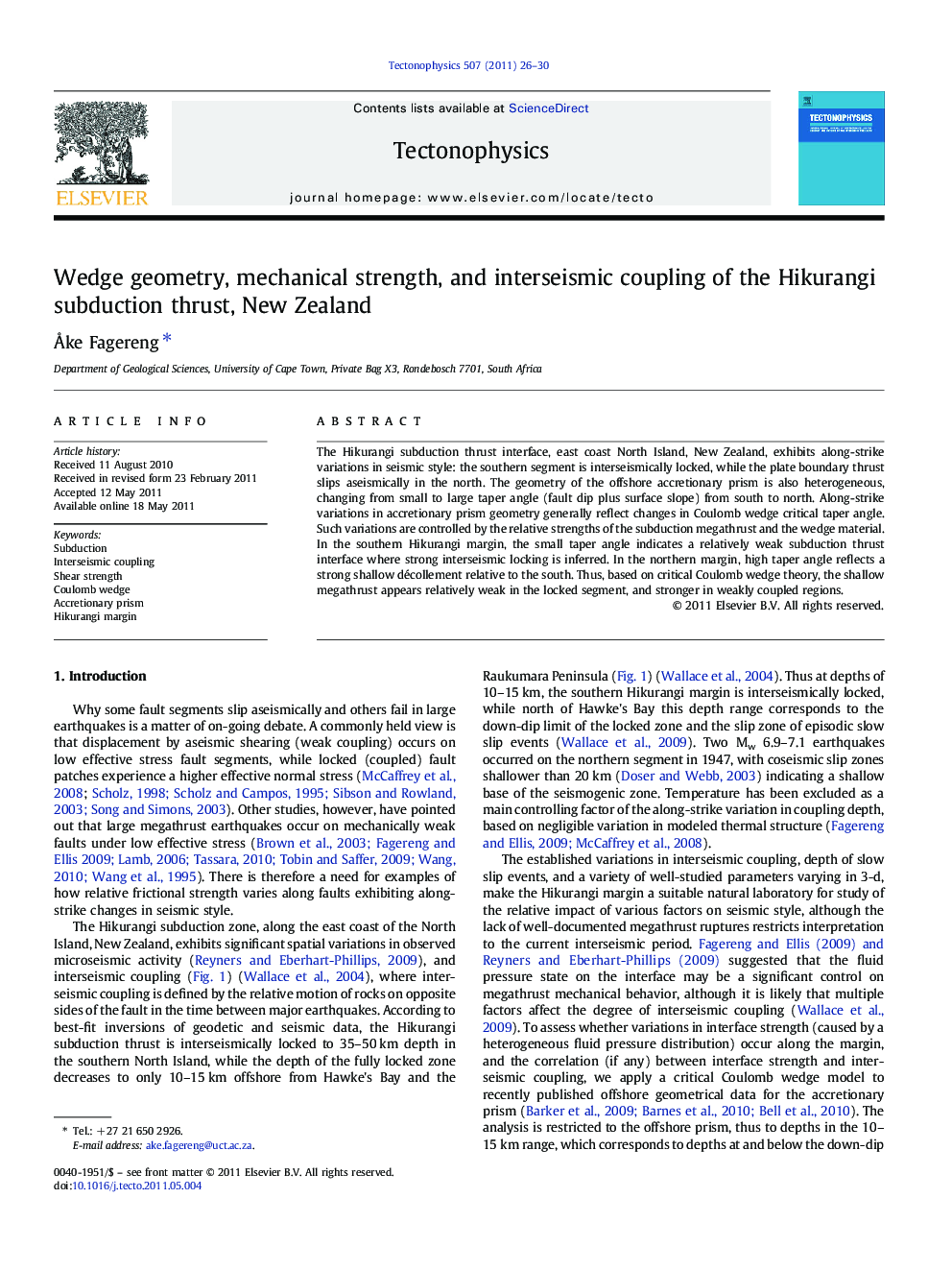| کد مقاله | کد نشریه | سال انتشار | مقاله انگلیسی | نسخه تمام متن |
|---|---|---|---|---|
| 4693076 | 1636842 | 2011 | 5 صفحه PDF | دانلود رایگان |

The Hikurangi subduction thrust interface, east coast North Island, New Zealand, exhibits along-strike variations in seismic style: the southern segment is interseismically locked, while the plate boundary thrust slips aseismically in the north. The geometry of the offshore accretionary prism is also heterogeneous, changing from small to large taper angle (fault dip plus surface slope) from south to north. Along-strike variations in accretionary prism geometry generally reflect changes in Coulomb wedge critical taper angle. Such variations are controlled by the relative strengths of the subduction megathrust and the wedge material. In the southern Hikurangi margin, the small taper angle indicates a relatively weak subduction thrust interface where strong interseismic locking is inferred. In the northern margin, high taper angle reflects a strong shallow décollement relative to the south. Thus, based on critical Coulomb wedge theory, the shallow megathrust appears relatively weak in the locked segment, and stronger in weakly coupled regions.
Research Highlights
► Wedge taper angle decreases with increased interseismic coupling.
► Interseismically coupled segments are relatively weak.
► Aseismically sliding segments appear relatively strong.
► There seems to be a correlation between high basal frictional strength and weak coupling.
Journal: Tectonophysics - Volume 507, Issues 1–4, 10 July 2011, Pages 26–30